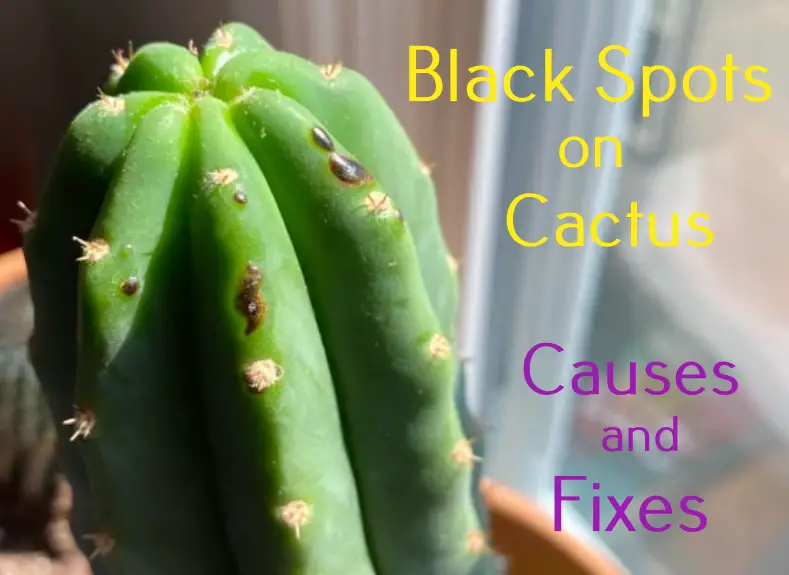Cactus plants, those resilient sentinels of the arid landscape, can sometimes bear unwanted visitor marks in the form of black spots. These discolored patches, akin to the shadows of an encroaching storm, can signal a variety of issues that threaten the health and vitality of these remarkable succulents. Understanding the causes and treatments for black spots on cacti is essential for any enthusiast looking to safeguard their green companions.
Black spots can appear for numerous reasons, of which over-watering, pest infestations, fungal infections, and environmental stressors are prominent culprits. Each cause looms like a different beast, feeding off the life force of these extraordinary plants. Let’s delve into the depths of the issue and explore practical solutions.
Understanding the Root Causes of Black Spots
The genesis of black spots can often be traced back to an excess of moisture, akin to a heavy rain that saturates the earth. Cacti, evolutionarily adapted to thrive in arid conditions, do not take kindly to soggy roots. When they receive too much water—either from torrential downpours or improper watering practices—the roots may begin to rot. This rot can manifest as black spots appearing on the plant’s surface, a clear signal of distress.
Identifying improper watering habits is crucial. An overzealous watering schedule combined with inadequate drainage can create a perfect storm for root rot, leading to black spot formation. On the opposite end of the spectrum, an under-watered cactus may show signs of dehydration, which can also stunt growth and cause spots. Striking the right balance is essential; much like a well-tuned orchestra, proper hydration orchestrates healthy growth.
Another formidable foe contributing to black spots is pests, particularly mealybugs and scale insects. These minuscule invaders resemble tiny armored soldiers, whom often feast on the sap, leaving behind a residue that can lead to further discoloration. Their presence can instigate secondary infections, triggering fungal growth on the cactus surface, resulting in dark, unsightly patches. Understanding the symbiotic relationship between pests and pathogens is vital for maintaining a robust cactus.
Environmental Stressors: The Silent Saboteurs
Environmental conditions also play a pivotal role in the well-being of cacti. Sudden changes in temperature, humidity, or exposure to excessive sunlight can instigate stress responses. Imagine the cactus as an artist’s canvas—a delicate creation susceptible to the whims of its surroundings. Prolonged exposure to extreme conditions can weaken your cactus’s defenses, make it more vulnerable to diseases, and contribute to the emergence of black spots.
A common form of environmental stress occurs when cacti are abruptly moved from indoors to outdoors or vice versa. Gradual acclimatization is essential for these plants, akin to an actor entering stage left after a lengthy intermission—a moment that demands finesse to avoid oversights. Likewise, inadequate air circulation can encourage moisture retention, fostering an ideal breeding ground for the aforementioned fungal infections.
Treatment of Black Spots: Restoring the Cactus’s Majesty
Once the source of the black spots is determined, it’s time to take action. Addressing over-watering is paramount. Begin by altering your watering routine. Allow the soil to dry out completely between waterings—this mimics the cacti’s native environment. If the roots are already compromised, consider repotting the plant in fresh, well-draining soil, cutting away the rotted portions with clean, sharp tools. This intervention helps to resurrect the plant’s health, akin to a phoenix rising from ash.
In the case of pest infestations, early intervention is crucial. Inspect your cactus intimately, looking for any tell-tale signs of mealybugs or scale. A solution of water and dish soap can effectively eliminate these intruders. For more severe infestations, horticultural oils or insecticidal soaps may be necessary. Be vigilant in your approach; eradication is not just about treating the symptoms but ensuring the entire ecosystem surrounding your cactus remains healthy and harmonious.
Combatting fungal infections requires more than just surface treatment. Apply a fungicide according to the instructions, but also ensure that the environmental conditions are corrected. Enhancing air circulation and providing adequate light exposure will hinder the potential for future outbreaks.
Vigilance is a gardener’s best ally. Regular inspections and adjusting care routines will arm you against the return of black spots. Embrace the unique appeal of your cactus with care, and let each fluctuation in its demeanor be a reminder of nature’s complexities. As you nurture your prickly friend, you become part of its story, an enduring partnership forged between human and verdant guardian. Through understanding and management, you can transform adversities into a thriving testament to resilience.





Leave a Comment